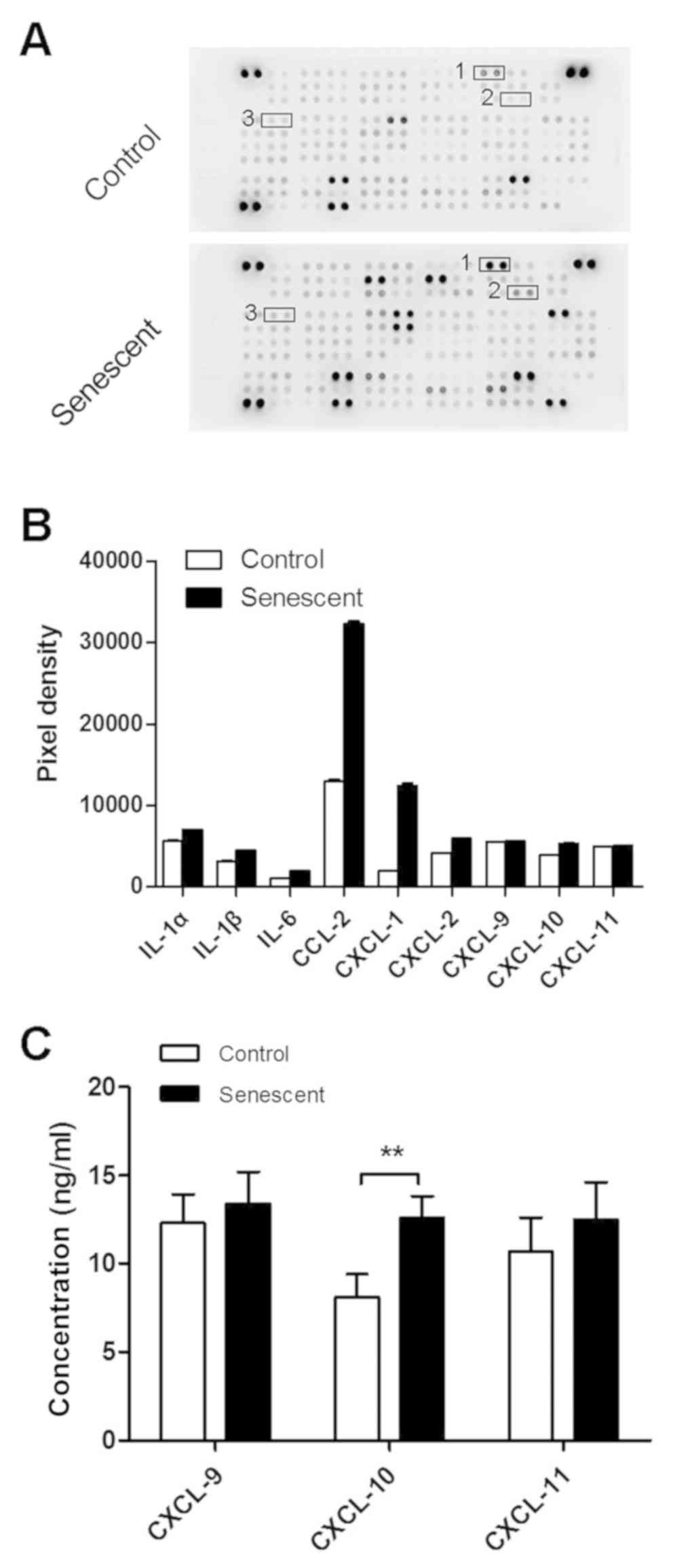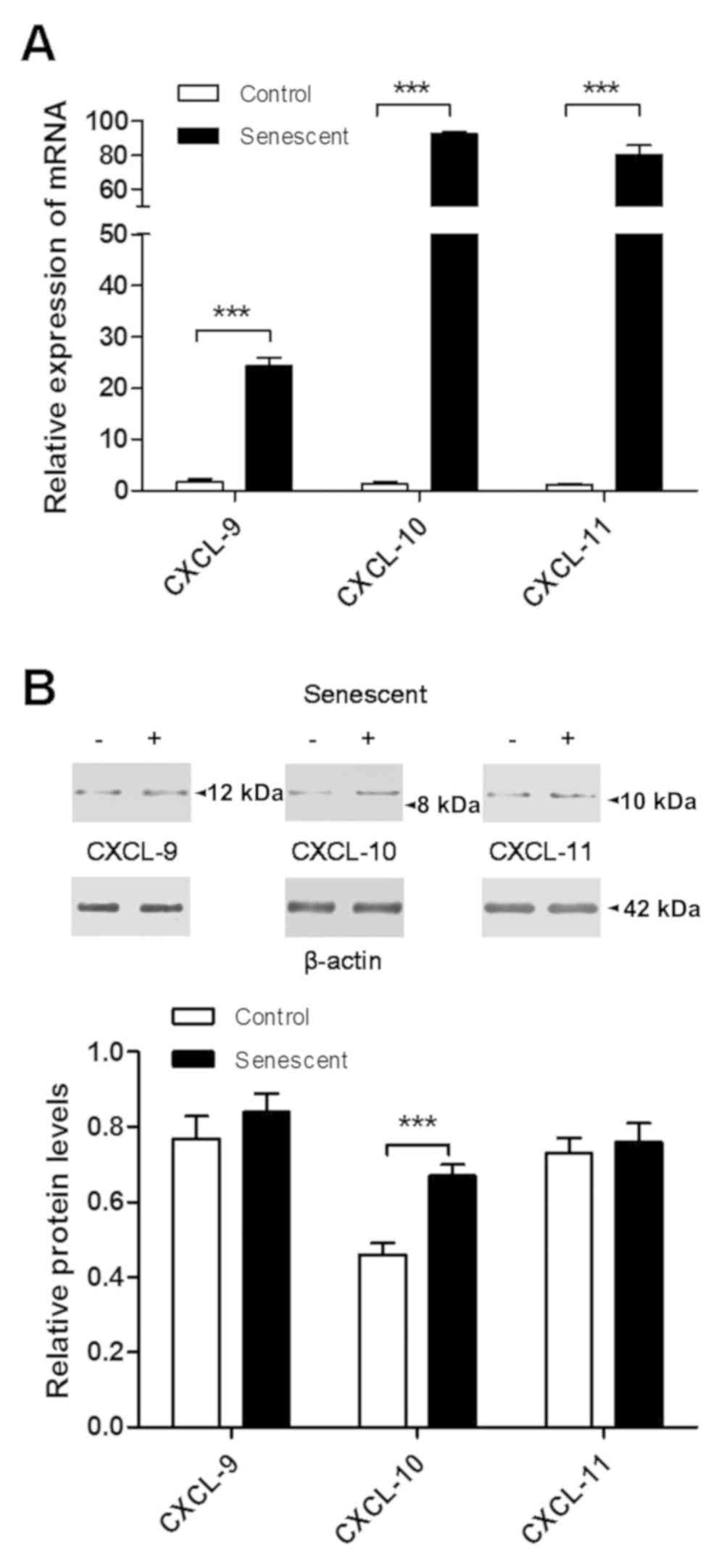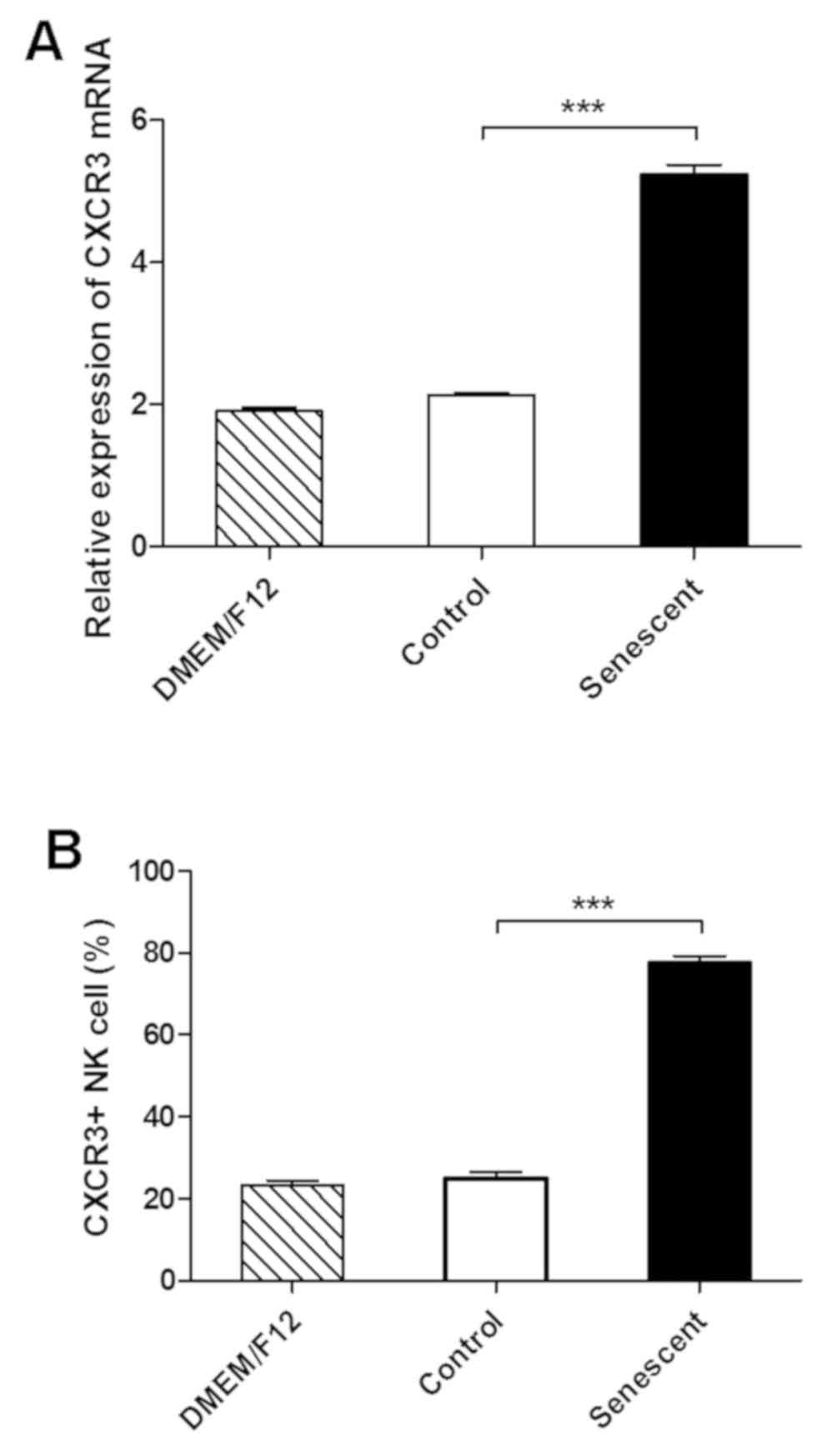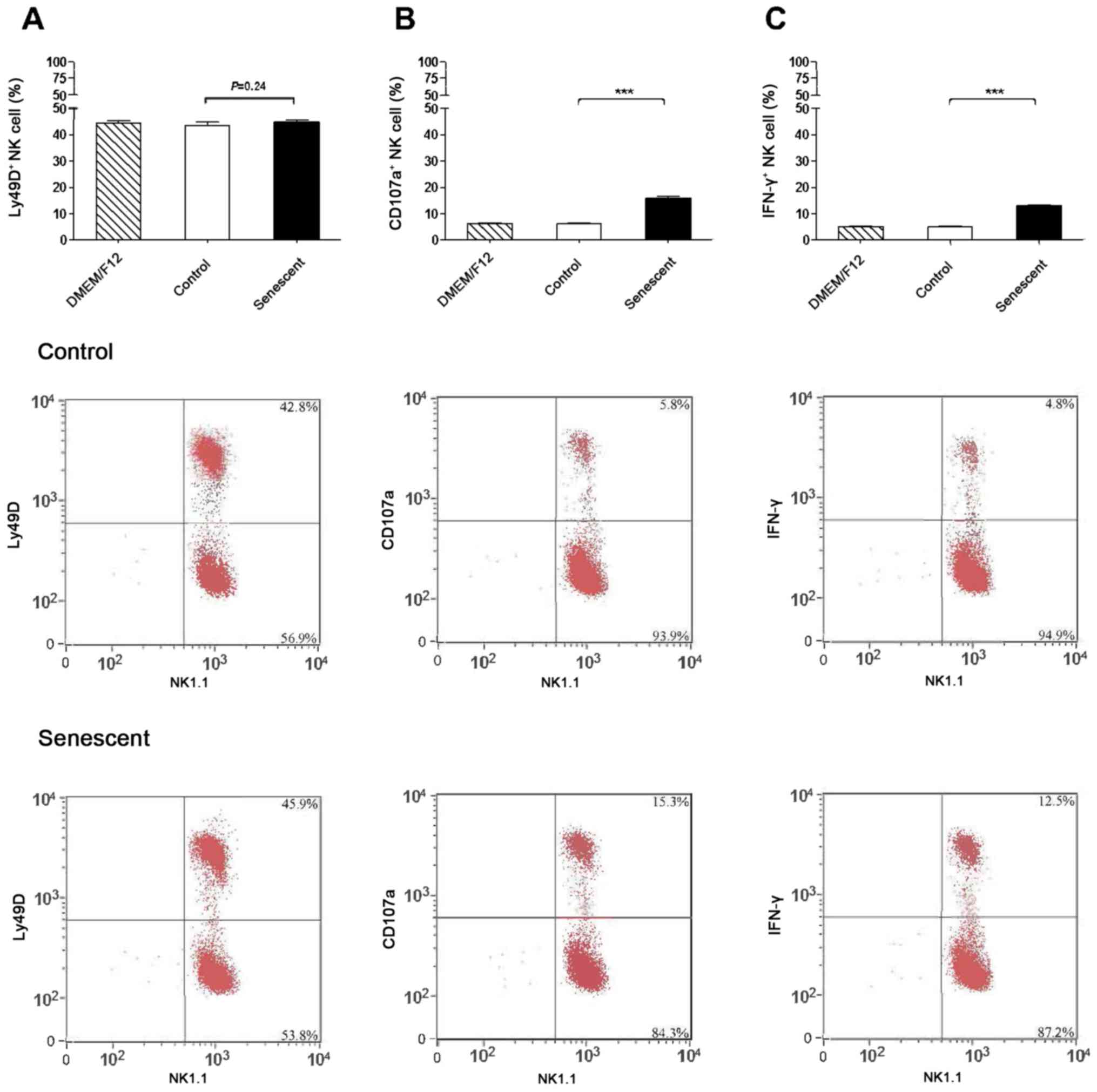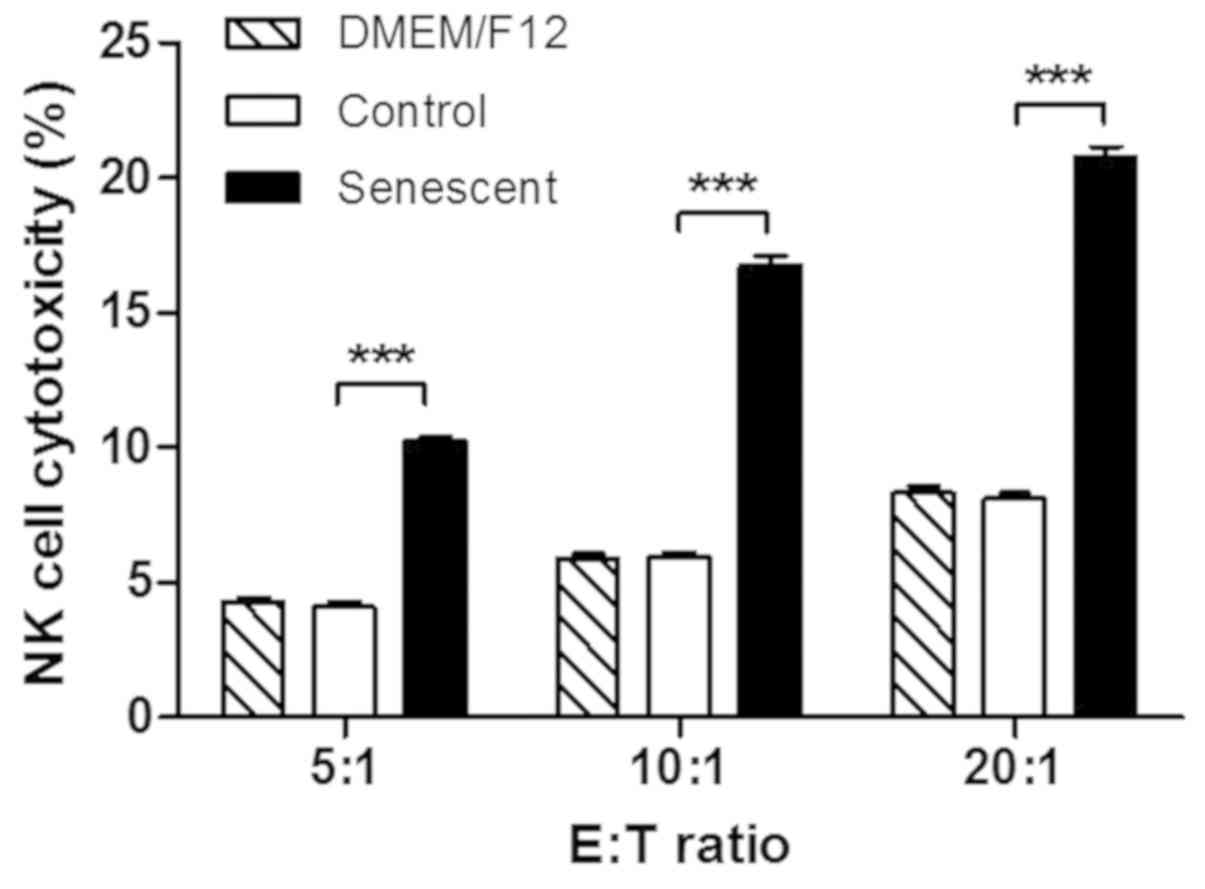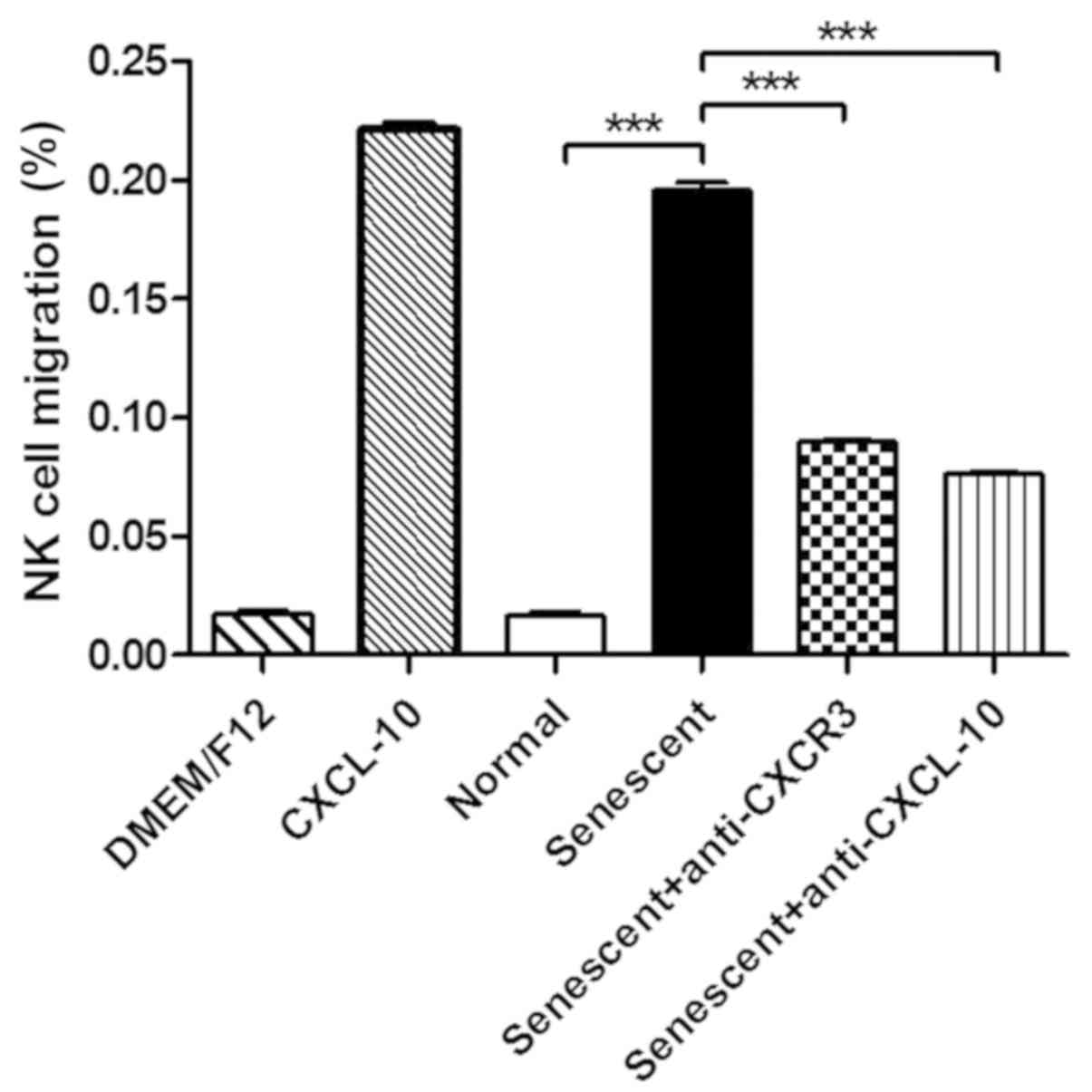|
1
|
Aravinthan AD and Alexander GJM:
Senescence in chronic liver disease: Is the future in aging? J
Hepatol. 65:825–834. 2016. View Article : Google Scholar : PubMed/NCBI
|
|
2
|
Byun HO, Lee YK, Kim JM and Yoon G: From
cell senescence to age-related diseases: Differential mechanisms of
action of senescence-associated secretory phenotypes. BMB Rep.
48:549–558. 2015. View Article : Google Scholar : PubMed/NCBI
|
|
3
|
Irvine KM, Skoien R, Bokil NJ, Melino M,
Thomas GP, Loo D, Gabrielli B, Hill MM, Sweet MJ, Clouston AD and
Powell EE: Senescent human hepatocytes express a unique secretory
phenotype and promote macrophage migration. World J Gastroenterol.
20:17851–17862. 2014. View Article : Google Scholar : PubMed/NCBI
|
|
4
|
Maciel-Barón LA, Morales-Rosales SL,
Aquino-Cruz AA, Triana-Martínez F, Galván-Arzate S, Luna-López A,
González-Puertos VY, López-Díazguerrero NE, Torres C and Königsberg
M: Senescence associated secretory phenotype profile from primary
lung mice fibroblasts depends on the senescence induction stimuli.
Age (Dordr). 38:262016. View Article : Google Scholar : PubMed/NCBI
|
|
5
|
Bellora F, Castriconi R, Dondero A,
Reggiardo G, Moretta L, Mantovani A, Moretta A and Bottino C: The
interaction of human natural killer cells with either unpolarized
or polarized macrophages results in different functional outcomes.
Proc Natl Acad Sci USA. 107:21659–21664. 2010. View Article : Google Scholar : PubMed/NCBI
|
|
6
|
Allen F, Bobanga ID, Rauhe P, Barkauskas
D, Teich N, Tong C, Myers J and Huang AY: CCL3 augments tumor
rejection and enhances CD8+ T cell infiltration through
NK and CD103+ dendritic cell recruitment via IFNγ.
Oncoimmunology. 7:e13935982017. View Article : Google Scholar : PubMed/NCBI
|
|
7
|
Bernardini G, Antonangeli F, Bonanni V and
Santoni A: Dysregulation of chemokine/chemokine receptor axes and
NK cell tissue localization during diseases. Front Immunol.
7:4022016. View Article : Google Scholar : PubMed/NCBI
|
|
8
|
Marquardt N, Wilk E, Pokoyski C, Schmidt
RE and Jacobs R: Murine CXCR3+CD27bright NK cells resemble the
human CD56bright NK-cell population. Eur J Immunol. 40:1428–1439.
2010. View Article : Google Scholar : PubMed/NCBI
|
|
9
|
Wang Z, Wu T, Ma M, Zhang Z, Fu Y, Liu J,
Xu J, Ding H, Han X, Chu Z, et al: Elevated interferon-γ-induced
protein 10 and its receptor CXCR3 impair NK cell function during
HIV infection. J Leukoc Biol. 102:163–170. 2017. View Article : Google Scholar : PubMed/NCBI
|
|
10
|
Hintermann E, Bayer M, Pfeilschifter JM,
Luster AD and Christen U: CXCL10 promotes liver fibrosis by
prevention of NK cell mediated hepatic stellate cell inactivation.
J Autoimmun. 35:424–435. 2010. View Article : Google Scholar : PubMed/NCBI
|
|
11
|
Zhang X, Shen J, Man K, Chu ES, Yau TO,
Sung JC, Go MY, Deng J, Lu L, Wong VW, et al: CXCL10 plays a key
role as an inflammatory mediator and a non-invasive biomarker of
non-alcoholic steatohepatitis. J Hepatol. 61:1365–1375. 2014.
View Article : Google Scholar : PubMed/NCBI
|
|
12
|
Ling CC, Ng KT, Shao Y, Geng W, Xiao JW,
Liu H, Li CX, Liu XB, Ma YY, Yeung WH, et al: Post-transplant
endothelial progenitor cell mobilization via CXCL10/CXCR3 signaling
promotes liver tumor growth. J Hepatol. 60:103–109. 2014.
View Article : Google Scholar : PubMed/NCBI
|
|
13
|
Zang J, Sha M, Zhang C, Ye J, Zhang K and
Gao J: Senescent hepatocyte secretion of matrix metalloproteinases
is regulated by nuclear factor-κB signaling. Life Sci. 191:205–210.
2017. View Article : Google Scholar : PubMed/NCBI
|
|
14
|
Livak KJ and Schmittgen TD: Analysis of
relative gene expression data using real-time quantitative PCR and
the 2(-Delta Delta C(T)) method. Methods. 25:402–408. 2001.
View Article : Google Scholar : PubMed/NCBI
|
|
15
|
Bryceson YT, Chiang SC, Darmanin S,
Fauriat C, Schlums H, Theorell J and Wood SM: Molecular mechanisms
of natural killer cell activation. J Innate Immun. 3:216–226. 2011.
View Article : Google Scholar : PubMed/NCBI
|
|
16
|
Rahim MM, Tu MM, Mahmoud AB, Wight A,
Abou-Samra E, Lima PD and Makrigiannis AP: Ly49 receptors: Innate
and adaptive immune paradigms. Front Immunol. 5:1452014. View Article : Google Scholar : PubMed/NCBI
|
|
17
|
Sasaki M, Ikeda H, Yamaguchi J, Miyakoshi
M, Sato Y and Nakanuma Y: Bile ductular cells undergoing cellular
senescence increase in chronic liver diseases along with fibrous
progression. Am J Clin Pathol. 133:212–223. 2010. View Article : Google Scholar : PubMed/NCBI
|
|
18
|
Aravinthan AD and Alexander GJ: Hepatocyte
senescence explains conjugated bilirubinaemia in chronic liver
failure. J Hepatol. 63:532–533. 2015. View Article : Google Scholar : PubMed/NCBI
|
|
19
|
Jin H, Jia Y, Yao Z, Huang J, Hao M, Yao
S, Lian N, Zhang F, Zhang C, Chen X, et al: Hepatic stellate cell
interferes with NK cell regulation of fibrogenesis via curcumin
induced senescence of hepatic stellate cell. Cell Signal. 33:79–85.
2017. View Article : Google Scholar : PubMed/NCBI
|
|
20
|
Barathan M, Mohamed R, Saeidi A, Vadivelu
J, Chang LY, Gopal K, Ram MR, Ansari AW, Kamarulzaman A, Velu V, et
al: Increased frequency of late-senescent T cells lacking CD127 in
chronic hepatitis C disease. Eur J Clin Invest. 45:466–474. 2015.
View Article : Google Scholar : PubMed/NCBI
|
|
21
|
Sekoguchi S, Nakajima T, Moriguchi M, Jo
M, Nishikawa T, Katagishi T, Kimura H, Minami M, Itoh Y, Kagawa K,
et al: Role of cell-cycle turnover and oxidative stress in telomere
shortening and cellular senescence in patients with chronic
hepatitis C. J Gastroenterol Hepatol. 22:182–190. 2007. View Article : Google Scholar : PubMed/NCBI
|
|
22
|
Aravinthan A, Pietrosi G, Hoare M, Jupp J,
Marshall A, Verrill C, Davies S, Bateman A, Sheron N, Allison M and
Alexander GJ: Hepatocyte expression of the senescence marker p21 is
linked to fibrosis and an adverse liver-related outcome in
alcohol-related liver disease. PLoS One. 8:e729042013. View Article : Google Scholar : PubMed/NCBI
|
|
23
|
Tachtatzis PM, Marshall A, Arvinthan A,
Verma S, Penrhyn-Lowe S, Mela M, Scarpini C, Davies SE, Coleman N
and Alexander GJ: Chronic hepatitis B virus infection: The relation
between hepatitis B antigen expression, telomere length,
senescence, inflammation and fibrosis. PLoS One. 10:e01275112015.
View Article : Google Scholar : PubMed/NCBI
|
|
24
|
Aravinthan A, Mells G, Allison M, Leathart
J, Kotronen A, Yki-Jarvinen H, Daly AK, Day CP, Anstee QM and
Alexander G: Gene polymorphisms of cellular senescence marker p21
and disease progression in non-alcohol-related fatty liver disease.
Cell Cycle. 13:1489–1494. 2014. View
Article : Google Scholar : PubMed/NCBI
|
|
25
|
Aravinthan A, Scarpini C, Tachtatzis P,
Verma S, Penrhyn-Lowe S, Harvey R, Davies SE, Allison M, Coleman N
and Alexander G: Hepatocyte senescence predicts progression in
non-alcohol-related fatty liver disease. J Hepatol. 58:549–556.
2013. View Article : Google Scholar : PubMed/NCBI
|
|
26
|
Yu Q, Katlinskaya YV, Carbone CJ, Zhao B,
Katlinski KV, Zheng H, Guha M, Li N, Chen Q, Yang T, et al:
DNA-damage-induced type I interferon promotes senescence and
inhibits stem cell function. Cell Rep. 11:785–797. 2015. View Article : Google Scholar : PubMed/NCBI
|
|
27
|
Fülöp T, Dupuis G, Witkowski JM and Larbi
A: The role of immunosenescence in the development of age-related
diseases. Rev Invest Clin. 68:84–91. 2016.PubMed/NCBI
|
|
28
|
Kang TW, Yevsa T, Woller N, Hoenicke L,
Wuestefeld T, Dauch D, Hohmeyer A, Gereke M, Rudalska R, Potapova
A, et al: Senescence surveillance of pre-malignant hepatocytes
limits liver cancer development. Nature. 479:547–551. 2011.
View Article : Google Scholar : PubMed/NCBI
|
|
29
|
Hubackova S, Krejcikova K, Bartek J and
Hodny Z: IL1- and TGFβ-Nox4 signaling, oxidative stress and DNA
damage response are shared features of replicative,
oncogene-induced, and drug-induced paracrine ‘bystander
senescence’. Aging (Albany NY). 4:932–951. 2012. View Article : Google Scholar : PubMed/NCBI
|
|
30
|
Sasaki M, Miyakoshi M, Sato Y and Nakanuma
Y: Modulation of the microenvironment by senescent biliary
epithelial cells may be involved in the pathogenesis of primary
biliary cirrhosis. J Hepatol. 53:318–325. 2010. View Article : Google Scholar : PubMed/NCBI
|
|
31
|
Acosta JC, Banito A, Wuestefeld T,
Georgilis A, Janich P, Morton JP, Athineos D, Kang TW, Lasitschka
F, Andrulis M, et al: A complex secretory program orchestrated by
the inflammasome controls paracrine senescence. Nat Cell Biol.
15:978–990. 2013. View
Article : Google Scholar : PubMed/NCBI
|
|
32
|
Vesely MD, Kershaw MH, Schreiber RD and
Smyth MJ: Natural innate and adaptive immunity to cancer. Annu Rev
Immunol. 29:235–271. 2011. View Article : Google Scholar : PubMed/NCBI
|
|
33
|
Bernardini G, Gismondi A and Santoni A:
Chemokines and NK cells: Regulators of development, trafficking and
functions. Immunol Lett. 145:39–46. 2012. View Article : Google Scholar : PubMed/NCBI
|
|
34
|
Shevtsov M and Multhoff G: Immunological
and translational aspects of NK cell-based antitumor
immunotherapies. Front Immunol. 7:4922016. View Article : Google Scholar : PubMed/NCBI
|
|
35
|
Zhu Y, Huang B and Shi J: Fas ligand and
lytic granule differentially control cytotoxic dynamics of natural
killer cell against cancer target. Oncotarget. 7:47163–47172.
2016.PubMed/NCBI
|
|
36
|
Eisenhardt M, Glässner A, Krämer B, Körner
C, Sibbing B, Kokordelis P, Nischalke HD, Sauerbruch T, Spengler U
and Nattermann J: The CXCR3(+)CD56Bright phenotype characterizes a
distinct NK cell subset with anti-fibrotic potential that shows
dys-regulated activity in hepatitis C. PLoS One. 7:e388462012.
View Article : Google Scholar : PubMed/NCBI
|
|
37
|
Xiao F, Ai G, Yan W, Wan X, Luo X and Ning
Q: Intrahepatic recruitment of cytotoxic NK cells contributes to
autoimmune hepatitis progression. Cell Immunol. 327:13–20. 2018.
View Article : Google Scholar : PubMed/NCBI
|
|
38
|
Wendel M, Galani IE, Suri-Payer E and
Cerwenka A: Natural killer cell accumulation in tumors is dependent
on IFN-gamma and CXCR3 ligands. Cancer Res. 68:8437–8445. 2008.
View Article : Google Scholar : PubMed/NCBI
|
|
39
|
Gómez-Lomelí P, Bravo-Cuellar A,
Hernández-Flores G, Jave-Suárez LF, Aguilar-Lemarroy A, Lerma-Díaz
JM, Domínguez-Rodríguez JR, Sánchez-Reyes K and Ortiz-Lazareno PC:
Increase of IFN-γ and TNF-α production in CD107a + NK-92 cells
co-cultured with cervical cancer cell lines pre-treated with the
HO-1 inhibitor. Cancer Cell Int. 14:1002014. View Article : Google Scholar : PubMed/NCBI
|
|
40
|
Basset L, Chevalier S, Danger Y, Arshad
MI, Piquet-Pellorce C, Gascan H and Samson M: Interleukin-27 and
IFNγ regulate the expression of CXCL9, CXCL10, and CXCL11 in
hepatitis. J Mol Med (Berl). 93:1355–1367. 2015. View Article : Google Scholar : PubMed/NCBI
|















